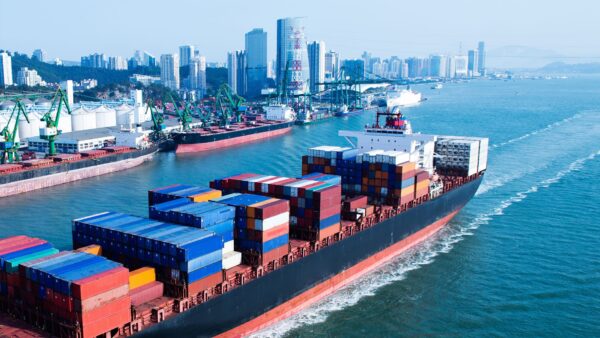Ocean freight or ocean freight forwarders are transportation ships that carry goods in large shipping containers. This is the world’s most popular and preferred transportation medium for importers and exporters. It accounts for almost 90 percent of the world’s total transportation of goods. Ocean freight forwarders specialize in transporting goods via shipping containers and their services also vary accordingly. This is a relatively more complicated mode of transport than aircraft transport due to different cross-border regulations and variations in the processes. Air-transport takes less time in transportation but it has its limitations. Aircraft carriers are expensive mediums that can carry only designated weight and they also cannot carry large containers. On the other hand, ocean freight forwarders are specifically designed for carrying extremely heavy and bulky containers.
In terms of mode of transportation of goods, ocean freight forwarders are of four types, namely, ExWorks (EXW), Free On Board (FOB), Delivery At Port (DAP)/Delivery and Duty Unpaid (DDU), and Cost Insurance and Freight (CIF). ExWorks (EXW) transports goods to the factory or manufacturer whereas Free On Board (FOB) transports goods to the internal terminal of the buyer’s country. Delivery At Port (DAP)/Delivery and Duty Unpaid (DDU) delivers goods directly to the plant or site excluding taxes and charges and Cost Insurance and Freight (CIF) takes care of the transport to the buyer’s country.
The global ocean freight market update suggests a global container shipping capacity of 8.4 percent, which is likely to exceed the demand growth of 3.1 percent. As a result, the global ocean freight industry is going through an imbalance in the demand-supply ratio. The supply-demand imbalance is due to certain global trends such as disparity in overcapacity and financial cycles, the adaptation of cargo to container shipping method, a faster-growing port capacity than trade volume, enhanced demand for consumer focus and technology, and sustainability and environmental issues.
Analysis on the Feasibility to Start a Business in Ocean Freight Services:
The global trade market is growing steadily and it is presenting business opportunities that can be utilized to establish a sustainable business model in the ocean freight services market. There are some imbalances in the current ocean freight market that have created the need for sustainable development in the industry at a global level. To understand the feasibility of an upcoming ocean freight business, it is imperative to know the current global trends such as trade-lane issues and freight rate pressure.
- Global Ocean Freight Market Overview: The Asia-Europe trade-lane is expected to face the largest capacity and freight rate pressure with a current gross capacity growth of 89 percent. The growth is driven by the delivery of new ships that are sized above 10,000 TEU. On the other hand, larger ships are going to replace small vessels in the Trans-Pacific trade-lane. The Trans-Pacific and Latin American regions are dominated by ships of 7,500 TEU to 9,999 TEU capacity while the Middle East and Indian subcontinent regions are dominated by the ships of 5,100 TEU to 7,499 TEU capacity. This reflects the dynamics of the ocean freight market that vary according to the geography of the respective region, shipping techniques used in that specific region, and market maturity.
In addition, a freight forwarder must have knowledge of international laws, shipping procedures, regional dynamics, financial aspects, and trade theories and practices. Some other factors that a freight forwarder should thoroughly understand are insurance coverage, customs regulations, local and international competition, warehousing, and documentation.
- Type of Business: Entrepreneurs have to also determine the type of shipping business they want to step into. An ocean freight forwarder is an individual who owns the vessel and takes responsibility for both the goods and the vessel. On the other hand, entrepreneurs can also choose to offer sea shipping services in which they do not own the ship but they have to take responsibility for the goods. This is basically a freight brokerage business. Both types of shipping require adequate permissions and licenses from the authorities.
In addition, the business also needs to have a business plan draft as per their shipping methods. The business plan should be able to cover the first few years of shipping so that they can understand the disparities in the global sea-trade pragmatically. A well-drafted business plan serves as a reference point in the times of need and it can also come in handy for convincing lenders or financers. A carefully designed blueprint should cover all the possible aspects of a business including principal participants, their experiences, expected finances, online and offline marketing strategy, etc.
Starting a freight forwarding or a freight brokerage business has its own perks and limitations. Freight forwarding offers more control whereas freight brokerage is more cost-effective. It is up to the business owners the path they choose as robust management of any of those will present opportunities to build an enterprise-level company.














Be First to Comment